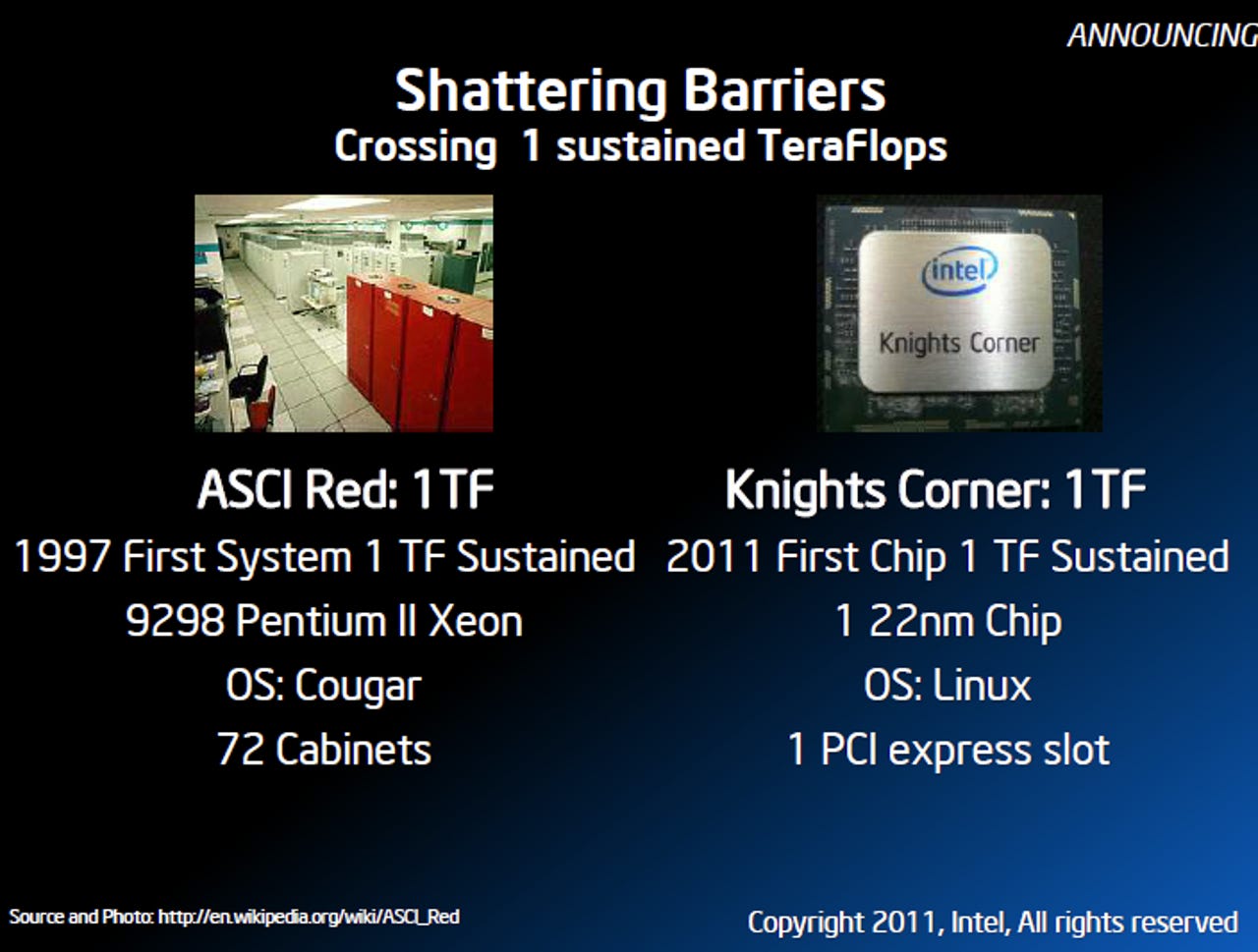Intel's 1 teraflop chip, exascale computing needs better story

Intel on Tuesday demonstrated a single 50-core chip that is the first to break the 1 teraflop barrier. This chip, dubbed Knight Corner, is the first commercial processor based on Intel's Many Integrated Core architecture.
Rajeeb Hazra, general manager of technical computing, Intel data center and the connected systems group, outlined the company's plans to remain the top supercomputer dog at SC11 in Seattle.
Intel was touting its Xeon E5 family, which supports PCI Express 3.0 I/O integration and powers 10 supercomputers on the Top 500 list.
The broader theme from Intel is that Knights Corner highlights how a huge system from 1997 can now be crammed on a single chip. Knight Corner will be manufactured with Intel's 3-D Tri-Gate 22nm process and features more than 50 cores.
Intel's big plan is to get to exascale computing in 2018. Exascale computing would be a thousand times faster than petascale, the ability to operate beyond a petaflop. The petaflop is one quadrillion floating point operations per second.
To that end, Intel has four labs in Europe---Paris, Julich, Leuven and Barcelona---to focus on performance, reliability, simulation and visualization and tools and algorithms. Exascale computing will need multiple disciplines---interconnects, power management, reliability, memory, parallel software and processors---to come together.
The demonstration of a 1 teraflop chip is notable, but Intel really needs a better story to tell. I got a briefing on Intel's supercomputer happenings and the storyline broke down like this.
- We have one chip that is the first to break the teraflop barrier.
- It's the foundation for high performance computing for years.
- It's exascale or bust.
To Intel, this Knights Corner chip was huge. However, I'm moving beyond the performance storyline---especially given the good-enough-technology trend. Historically speaking, Intel's answer for everything is better performance, more muscle and manufacturing breakthroughs. Intel does it well. But in the end, I want the narrative. What exactly is possible with exascale computing? I'm just not bright enough to know what's possible and need the possibilities pointed out. A few key questions:
- Does exascale computing lead to Skynet?
- What algorithm possibilities are enabled by exascale computing?
- What are the artificial intelligence implications?
- And what are the scientific possibilities?
Too often with technology vendors we get the breakthrough but not the possibilities. I'm sure Intel's Knights Corner development will be a huge over time, but I increasingly want a narrative to connect the dots.
Related:
